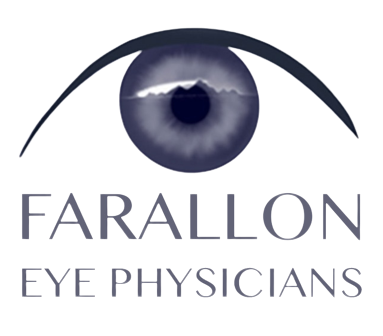Chalazia
Chalazia
Chalazia
A chalazion is an inflammation within the gland of the eyelid. It forms over several weeks and appears as a reddened lump or bump on the eyelid. A chalazion can cause eyelid tenderness and painful swelling. In some cases, chalazia can be treated at home. A doctor should treat a chalazion if home treatments fail or the condition gets worse.
Anatomy
Your skin is composed of three major layers, the epidermis, dermis, and subcutaneous tissue. The epidermis is the outermost layer of your skin. It protects your inner layers of skin from the environment. The dermis is made up of connective tissue and provides structure. It contains hair cells, sweat glands, and sebaceous glands that secrete oils to moisturize skin. Subcutaneous tissue contains fat cells that insulate your body and make your skin appear plump or full.
Meibomian glands are a type of sebaceous gland located in the eyelid. Meibomian glands produce oils and tear film that lubricates your eyes. Each of your eyelids has about 100 meibomian glands. They are located near your eyelashes.
Causes
A chalazion occurs when the duct of a meibomian gland is blocked. If the duct is obstructed, oil from a meibomian gland cannot drain. As more oil is produced, it builds up and causes a lump or bump to form on the eyelid. Eventually, the gland breaks open.
Chalazia are not the same thing as styes, although they may appear to be similar. Styes form in the glands and eyelash follicles that are closer to the surface of the skin. A stye usually causes more pain and looks more infected.
Symptoms
Chalazia develop more frequently on the upper eyelid. A chalazion may begin as a swollen area that slowly increases in size over weeks to form a small lump. A chalazion can cause eyelid tenderness and painful swelling. The affected area may appear red.
In some cases, chalazia can cause the eyes to produce more tears. Your eyes may be more sensitive to light than they were before. A large chalazion can cause astigmatism if it puts pressure on the cornea in your eye. Astigmatism causes blurred vision and eye discomfort.
Diagnosis
You should contact a doctor, dermatologist, or an ophthalmologist, a doctor that specializes in eye disease, if you have eyelid redness or swelling that gets worse, causes blurred vision, fever, headache, or severe pain. You should contact your doctor if you have significant swelling, redness, or if both eyes are swollen. A doctor can diagnose a chalazion. The doctor will examine the outside and inside of your eyelid and will also test your vision.
Treatment
Some chalazia can be treated at home. It can be helpful to apply a clean warm compress to the affected area for several minutes a few times a day. The warmth can help soften the oils, promote drainage and reduce swelling. You should not try to “pop,” burst, or scratch the chalazion. Chalazia can take about a month to heal.
You should contact your doctor if your chalazion does not respond to treatment, grows larger, or comes back. Your doctor can treat your chalazion with medication. In some cases, chalazia are surgically removed.
Prevention
Keeping your eyelid clean and dry may help promote healing. You should avoid wearing eye make-up if you develop a chalazion. Avoid popping or squeezing a chalazion, this will only make the condition worse.
Am I At Risk?
Risk factors may increase your likelihood of developing chalazia. People with all of the risk factors may never develop the condition; however, the chance of developing chalazia increases with the more risk factors you have. You should tell your doctor about your risk factors and discuss your concerns.
Risk factors for chalazia:
_____ Chalazia are more common in adults, although they can occur at any age.
_____ If you have had a chalazion, you are at risk to have another one. It is common for chalazia to recur.
_____ Hormone increases in the teenage years or during pregnancy may contribute to chalazion formation.
_____ Poor eyelid hygiene increases the risk of chalazia.
_____ Seborrhea, chronic blepharitis, and acne rosacea are conditions that are associated with an increased risk for chalazia.
_____ It appears that stress is linked to chalazia, but that association is not clear.
Complications
In rare cases, the duct of a meibomian gland can be blocked by skin cancer. Your doctor will perform a biopsy if skin cancer is suspected. A biopsy involves taking a tissue sample for examination under a microscope.
This information is intended for educational and informational purposes only. It should not be used in place of an individual consultation or examination or replace the advice of your health care professional and should not be relied upon to determine diagnosis or course of treatment.
The iHealthSpot patient education library was written collaboratively by the iHealthSpot editorial team which includes Senior Medical Authors Dr. Mary Car-Blanchard, OTD/OTR/L and Valerie K. Clark, and the following editorial advisors: Steve Meadows, MD, Ernie F. Soto, DDS, Ronald J. Glatzer, MD, Jonathan Rosenberg, MD, Christopher M. Nolte, MD, David Applebaum, MD, Jonathan M. Tarrash, MD, and Paula Soto, RN/BSN. This content complies with the HONcode standard for trustworthy health information. The library commenced development on September 1, 2005 with the latest update/addition on April 13th, 2016. For information on iHealthSpot’s other services including medical website design, visit www.iHealthSpot.com.
To schedule an appointment for optical, ophthalmology or cosmetic services in Daly City, California, simply call the office of Susan Longar, MD.



